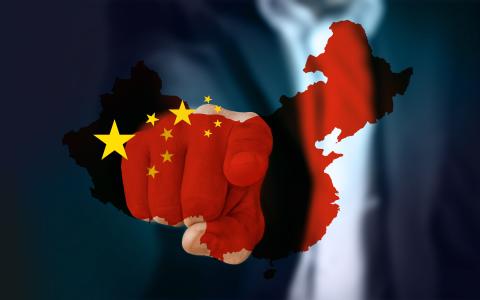
(Bloomberg) - China’s consumer inflation rate was flat in June while factory-gate prices fell further, fueling concerns about deflation risks and adding to speculation about potential economic stimulus.
The consumer price index was unchanged last month from a year earlier, according to data released by the National Bureau of Statistics on Monday. That was the weakest rate since February 2021, when slumping pork costs dragged on the index.
Core inflation, which excludes volatile food and energy costs, slowed to 0.4% from 0.6%. Producer prices fell 5.4% from a year earlier, the deepest pace since December 2015.
“The risk of deflation is very real,” said Zhang Zhiwei, chief economist at Pinpoint Asset Management Ltd.
Both gauges add to evidence that the recovery is weakening, with concerns about deflation weighing on confidence. That’s likely to spur more speculation about what potential stimulus may be in the cards to shore up the economy.
“Today’s data certainly argues for more policy easing, which policymakers are already doing, but only in a measured manner,” said Michelle Lam, Greater China economist at Societe Generale SA.
Producers have already spent months contending with lower commodity prices and weak demand at home and abroad. If consumers and businesses continue to hold back from spending or investment in the hopes of prices getting lower that could lead to a self-fulfilling price dropping spiral.
The Hang Seng China Enterprises Index advanced 0.7% as of the mid-day break on Monday, driven by tech stocks as investors look for normalization in the nation’s regulatory environment.
The CSI 300 gauge of mainland shares rose 0.5%, following three weeks of drops. The offshore yuan erased gains of as much as 0.2% after the inflation data.
A key drag on consumer prices last month was pork prices. The cost of meat — a staple in the Chinese diet — fell 7.2% in June from a year earlier. That was more than May’s 3.2% decrease.
The government has been trying to put a floor under pork price declines, saying last week that it would buy more pork for state reserves to boost demand.
The producer price deflation was fueled by extended drops in international commodity prices. In a statement, NBS statistician Dong Lijuan cited a continued fall in the costs of oil and coal, as well as a high base of comparison with last year.
Aside from a brief period of deflation in early 2021, China hasn’t experienced prolonged consumer price deflation since 2009 amid the global financial crisis.
Back then, Beijing introduced a 4 trillion yuan ($553 billion) stimulus package focused on infrastructure and upgrading industry. While that plan bolstered growth at the time, it also led local governments to borrow more than they were legally allowed, causing debt to balloon.
The scope for policy to stem the threat of deflation is more limited this time around, in part given concerns about debt risks.
What Bloomberg Economics Says ...
“Zero consumer price inflation and deeper falls in producer prices in June suggest China’s post-covid rebound has lost more steam. Flagging momentum on the price front is a sign of weak demand that clouds the growth outlook. The need for more stimulus from the People’s Bank of China is rising.”
— David Qu, economist
Most measures to support the economy have been limited, with the central bank cutting a key policy interest rate last month by only a small amount. The government has also extended tax breaks for buyers of electric cars.
“It’s very unlikely for the government to introduce extraordinarily strong macro policies,” said Bruce Pang, chief economist at Jones Lang Lasalle Inc. He added that leaders are emphasizing “high-quality growth that’s stable and strikes a balance between economic structural adjustment and risk prevention.”
Premier Li Qiang spoke last week with some Chinese economists about potential aid, though he emphasized that policies would be “targeted, comprehensive and well-coordinated” — reinforcing expectations that stimulus would not be massive in size.
The government needs to shift its focus from supply-side policies to measures that address the demand problems, said Xing Zhaopeng, senior China strategist at Australia and New Zealand Banking Group.
Chinese authorities have long supported companies by using targeted lending tools such as those intended to aid the manufacturing and renewable energy sectors. Meanwhile, officials have often shunned policies intended to give consumers direct help, such as subsidies.
“China is facing excess supply now,” Xing said, warning of an intensifying “deflation-recession loop.”
(Updates throughout.)
Bloomberg News
With assistance from Yujing Liu, Tan Hwee Ann, Zhu Lin and Ishika Mookerjee



